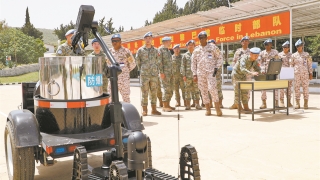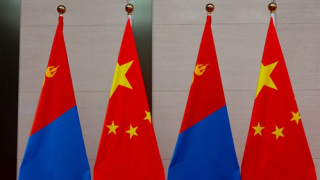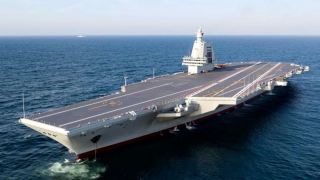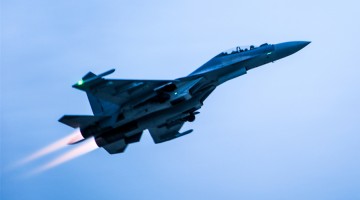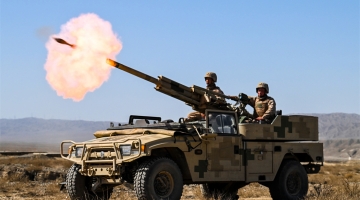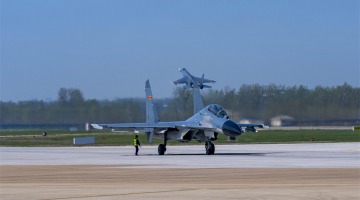By Guo Xiaobing
The Biden administration finally released the 2022 Nuclear Posture Review (NPR) after several delays. Although embellished by the rhetoric of nuclear arms control, the 2022 NPR is, in essence, no different from the nuclear strategy of the Trump administration.
Has the practice of increasing the use of nuclear weapons and lowering the threshold for nuclear weapons use of the Trump administration been changed? No. When the Trump administration first threatened to use nuclear weapons in retaliation for space and cyber-attacks, it was immediately criticized by the international community. The Biden administration has been vocal about the importance of nuclear arms control and promised to reduce the role of nuclear weapons in national security policy. But it not only refused to adopt the "no first use" policy, but also changed its declaration that "the sole purpose of nuclear weapons is to deter and retaliate against nuclear attacks". The Biden administration wants to use nuclear weapons to deter both nuclear attacks and other non-nuclear strategic attacks.
Has the practice of preparing low-yield nuclear weapons for a limited nuclear war of the Trump administration been changed? No. The planned use of submarine-launched ballistic and cruise missiles to carry low-yield nuclear warheads is another widely criticized aspect of the Trump administration's nuclear strategy, as it would increase the risk of nuclear conflict. After a long assessment of its predecessor’s practice, the Biden administration just came to the conclusion that it must "contain limited use of nuclear weapons" so the US can use conventional military power withoutscruple. And the low-yield nuclear weapon is an important tool to "contain limited use of nuclear weapons", so it decided to continue to install low-yield nuclear warheads on submarine-launched ballistic missiles. Has the practice of increasing nuclear investment and promoting the modernization of nuclear triad of the Trump administration been changed? Not at all. In terms of the land-based force, the Sentinel ICBM will replace Minuteman III as a new-generation land-based deterrent force as scheduled. In terms of sea-based force, the Columbia-class strategic nuclear submarine will replace the Ohio-class strategic nuclear submarine from 2030. In terms of air-based force, the B-21 Raider strategic bomber will replace the B-2A strategic bomber. The F-35A fighter jets will also carry nuclear warheads and gradually replace the F-15E fighter jets for NATO's nuclear missions.
Moreover, the new NPR also goes further in the discussion of the nuclear landscape and the application of the nuclear umbrella. Unlike the previous version, the new NPR ignores the fact that the scale of China's nuclear forces is vastly smaller than that of the US and Russia and creates the illusion of a "three major nuclear countries era". The new NPR states that the US will, for the first time in its history, face two nuclear powers as two strategic competitors and potential adversaries by the 2030s. It even disregards China's consistent policy of no first use of nuclear weapons and baselessly speculates that China may be "the first to use nuclear weapons". The new NPR takes a step further and seeks to further strengthen "nuclear sharing" with allies. It plans to hold higher-level meetings between the US, Japan, and the ROK, as well as between the US, Japan, the ROK, and Australia, and strengthen so-called crisis management. The US will also continue to deploy strategic bombers, dual conventional-nuclear fighter jets and nuclear weapons in the Indo-Pacific region and demonstrate its nuclear muscle through ballistic missile submarine visits and strategic bomber patrols.
Currently, the international community is facing the most severe nuclear situation since the end of the Cold War. The NPR launched by the Biden administration is no different from that of the Trump administration and is even more extreme in some respects. How can the international community believe that the US will manage and use its nuclear weapons “rationally”? Will the US, which is making threatening gestures, intimidate countries it regards as "competitors" or "potential adversaries", or will it stimulate more countries to develop self-defense capabilities, including nuclear capabilities, to prevent US military interference and blackmail? For some regional crises that continue to be tense or are already on fire, is the US adding fuel to the fire, or helping solve the issue? For the increasingly divided international society, is the US promoting world harmony or stoking group confrontation? Anyone with a discerning eye can easily give the answer.
(The author is the director of the Center for Arms Control Studies of the China Institute of Contemporary International Relations)
Editor's note: Originally published on huanqiu.com, this article is translated from Chinese into English and edited by the China Military Online. The information and opinions in this article do not necessarily reflect the views of eng.chinamil.com.cn.

